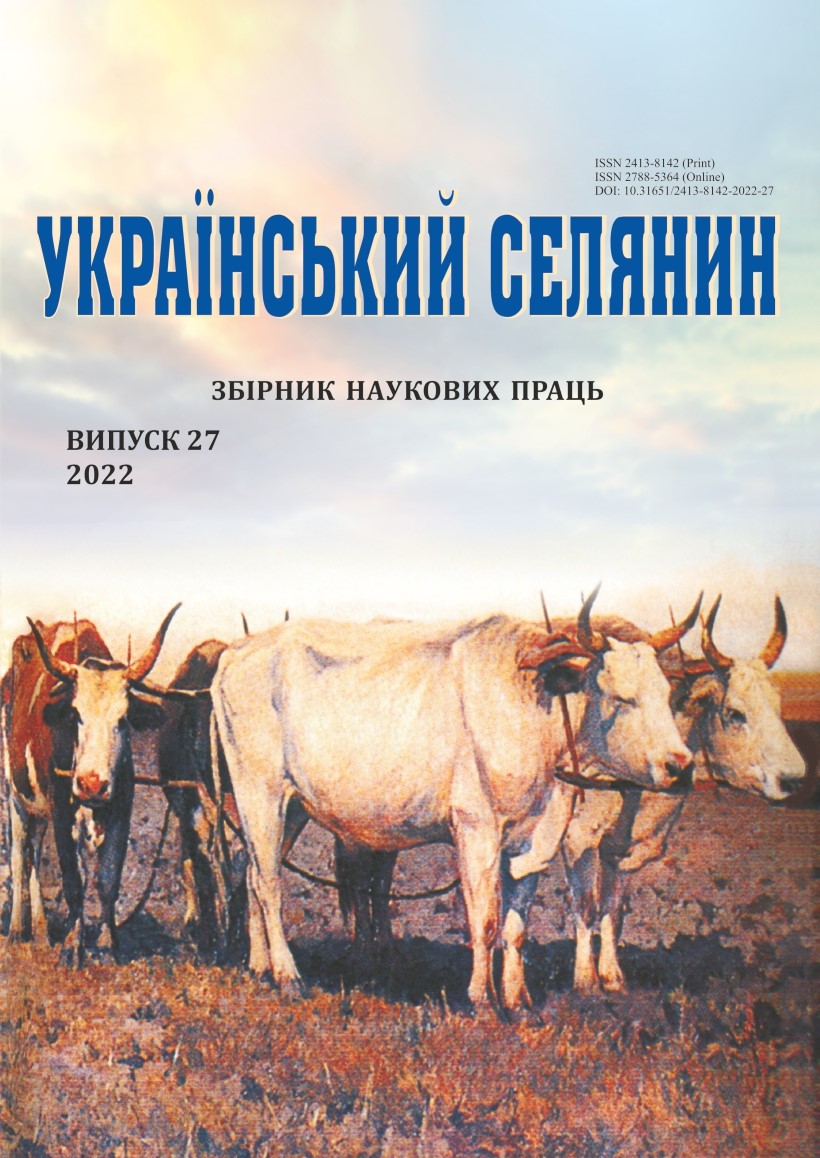The tragedy of the Holodomor-genocide: television content of Ukraine in the 1990s and 2010s.
Main Article Content
Abstract
Abstract. Purpose. The purpose of the research is an attempt to expose the television content in Ukraine in the 1990s and
2010s, the ways it presented the events and evaluations of the Holodomor genocide tragedy of 1932–1933.
Scientific novelty. In the article, for the first time in Ukrainian historiography, various aspects of coverage of the Holodomor
topic in the mass media in the period after 1991 were investigated. The main attention was paid to television, which had its own
notable features. First of all, these are waves of etheric activity that changed with the state of amorphousness, and vice versa.
Such dynamics were determined by the perturbations of the country’s political leadership and its, so to speak, «personal vision» of history. And the speculative use of the Holodomor theme for political purposes. Sometimes it had a positive effect, as at the times of third president V. Yushchenko. Conclusion. It has been evidenced that during the «orange rule», there was a rise in an unprecedented public awareness of the crimes of the Bolshevik dictatorship. Against that background, the reestablishment of the historical memory of the present Ukrainians was obvious. Synchronously, the formation of a request for in-depth knowledge of this historical period was observed. In general, it was a constructive state policy aimed at promoting the development of civil society in Ukraine. The author proposed a working hypothesis that the processes then became irreversible. Even with the change in the attitude of the next political leadership of the country during the presidency of V. Yanukovych toward the Holodomor, a critical mass of the civil society still remained. Having involved information sources, some of which were first introduced into scientific circulation, the author offers a wide range of views, interpretations, and impressions of the television content. If desired, they can be classified according to certain criteria, in particular, divided into pro-Russian and pro-European (i.e., democratic). The former conditionally reflect the historical memory of the executioners, therefore the «creators» of the Holodomor genocide, the latter represent their victims. At the same time, the historical memory presented in the media, namely, television, of Ukraine in the 1990s and 2010s was significantly influenced by the momentary political situation.
Article Details
References
Antonovych, M. and others. (2013). Holodomor 1932–1933 rokiv v Ukraini, yak zlochyn henotsydu zhidno
iz mizhnarodnym pravom» [Antonovych, M. The Holodomor of 1932–1933 in Ukraine, as a crime of genocide under
international law»]. Kyiv : Kyiv-Mohyla Academy. [in Ukrainian].
Bakhteev, B. (2016). Tema Holodomoru : vyity z farvateru rosiiskoi propahandy [The theme of the Holodomor :
to get out of the fairway of Russian propaganda]. URL : detector.media/infospace-/article/121649/2016-12-21-temagolodomoru-vyyty-z-farvateru-rosiyskoi-propogandy/ [in Ukrainian].
Bondar, V. (2013). Derzhavna polityka istorychnoi pamiati v Ukraini 1990–2000-ch rr.: osnovni tendentsii [State
policy of historical memory in Ukraine 1990–2000 : main trends]. Historiographic research in Ukraine, 23, 377–400.
[in Ukrainian].
Istoriia Holodomoru [History of the Holodomor]. (2022). URL: https://holodomormuseum.org.ua/istoriiaholodomoru/ [in Ukrainian].
Levitska, E., Zakharchenko, V., Zhuk, P., Klymenko, T., Rubtsova, V. & Tytarenko, O. (2008). Natsionalna knyha
pamiati zhertv Holodomoru 1932–1933 rokiv v Ukraini. Cherkaska oblasts [National Book of Remembrance for the
Victims of the Holodomor of 1932–1933 in Ukraine. Cherkasy region]. Cherkasy: Vyd. Chabanenko Yu, 1. [in Ukrainian].
Promova, V. Yushchenka z nahody 75-ch rocovyn Holodomoru [Yushchenko’s speech on the occasion of the 75th
anniversary of the Holodomor]. https://youtube.com/watch?v=TiSqeqsbaC8&feature=share [in Ukrainian].
Spetsproekty ta tematychni efiry transluvaly na regionalnych kanalach Suspilnoho do Dnia pamiati zhertv
Holodomoriv (2019). – Suspilne Odesa [Special projects and thematic broadcasts were broadcast on regional channels of
the Suspilne to the Day of Remembrance of the Victims of the Holodomor – Suspilne Odesa]. URL: https://od.suspilne.
media/articles/3320 [in Ukrainian].
Svyаschenko, Yu. (2021). Holodomor v Odessi i selach : tpupy krestian, besprisornye deti, kannibalizm
[Holodomor in Odessa and villages : corpses of peasants, homeless children, cannibalism]. URL: https://www.048.ua/
news/3266273/golodomor-v-odesse-i-selah-trupy-krestan-besprizornye-deti-kannibalizm [in Russian].
Zhuk, P., Zakharchenko, V., Kalynovs’ka, T., Klymenko, T., Barchuk, A., Hvozdyk, V., Yavors’kyy, I., Solodar,
O. & Mazurenko, O. (2007). Holodomor 1932–1933 nа Cherkashchyni. Knyha pamiati v dokumentach ta spohadach
[The Holodomor of 1932–1933 in the Cherkasy Region. A book of memory in documents and memoirs]. Cherkasy : Vyd.
Chabanenko Yu. [in Ukrainian].

